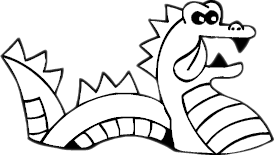Q. What is Odyssey of the Mind?
A. Odyssey of the Mind is a creative problem-solving competition for students of all ages. Teams of students select a problem, create a solution, then present their solution in a competition against other teams in the same problem and division.
Q. What is Vermont Odyssey of the Mind?
A. Vermont Creativity Quest, Inc. (VCQ) is an all-volunteer, IRS 501c3 organization that offers the Odyssey of the Mind creative problem solving program and a tournament experience to young people in Vermont. We value creativity, team work, and appreciation and understanding of others.
Q. What is needed to work on an Odyssey of the Mind problem?
A. To solve a problem, teams must follow the general rules in the Program Guide, limitations in selected Long-Term Problem, and any clarifications issued during the year. The rules in this guide pertain to all the problems; any conflicting problem limitations supersede these rules, and clarifications issued throughout this program year supersede the rules and the problem limitations.
Q. What do you mean by Long-Term Problem?
A. There are five types of Long-Term Problems available for competitive teams to try that focus in different interest areas: vehicle, technical, classical, structural, and theatrical. A separate non-competitive introductory problem is available for Primary (K-2) teams. The Long-Term Problems are solved by the team working together to brainstorm, construct, and present the solution.
Q. How many students on a team?
A. Teams are usually composed of 5-7 members (never more than 7) working under the guidance of an adult coach.
Q. What are the age divisions?
A. The division a team is in is based upon the grade/age of the oldest student on the team.
Generally:
Primary teams (K-2) may solve the non-competitive Primary problem only
Division I (Grades K-5, ages 3-11 yrs),
Division II (Grades 6-8, ages 12-14 yrs),
Division III (High School, ages 15-18)
Q. How long does it take?
A. Teams spend weeks or months, at their own pace, creating solutions to long-term problems. Some teams meet for an hour or two weekly, others meet every other week. The schedule is determined by the interest and availability of the coach and team members.
Q. How much does it cost?
A. The international membership fee is $290. This membership covers several teams within a school or group. A tournament fee of $75 per team is required to participate in the tournament. In addition, teams must cover the cost of solving the Long‑Term Problem, however this is normally minimal due to use of school, household, or recycled items, and is also limited to the cost limit of each problem.
Q. What is a Membership Coordinator?
A. Each school or group has one person designated as a “Membership Coordinator”. This person serves as a point of contact in your local program, and may help teams to organize, choose a Long-Term Problem, and find coaches. The membership package is shipped to this person.
Q. Who actually does the work?
A. Team members come up with all the ideas for their solution and do all the work themselves. Coaches can assist with organization, scheduling, teaching needed skills, and practicing spontaneous.
Q. How do I learn more about coaching?
A. Attend one of the several coaches training sessions held around the state in October-November each year, or, if you cannot attend, ask for our Coaches Training on-line. Coaches Training is not required, but is very helpful.
Q. How can my child get on a team?
A. Teams are organized at the individual schools or by local groups. Contact your school to see if they have a team or about starting a team.
Q. How much time does a team have to present their Long-Term Problem solution at a tournament?
A. Teams have 8 minutes to present their Long-Term Problem solution in competition. This includes setup time.
Q. How are the teams judged?
A. Teams are judged in three categories: Long-Term Problem solution, Style during their Long-Term performance, and Spontaneous problem solving. Judges are training to observe and score particular parts of the solution.
Q. How are teams scored?
A. Teams are scored for meeting the requirements of the problem and for creativity in categories specific to each problem. There is a section on scoring in each Long-Term Problem. Teams also present an elaboration (theme) for their Long-Term performance, termed Style. On the day of competition teams are also presented a Spontaneous problem and must solve it. Team scores are adjusted so that the highest scoring team receives 200 points for Long-Term, 100 points for Spontaneous and 50 points for Style.
Q. How is team ranking determined at a tournament?
A. A team’s standing in competition is determined by its combined adjusted Long-Term score, Style score, and Spontaneous score. Teams ranked 1st and 2nd in each Long-Term Problem and Division, as well as teams receiving a Ranatra Fusca Creativity Award, are invited to attend World Finals.
Q. What is World Finals?
A. The Odyssey of the Mind World Finals is the culmination of each Odyssey of the Mind season. Teams from Odyssey of the Mind Associations from throughout the U.S. and several countries attend to compete.
Q. How many tournaments are there in Vermont?
A. Currently there are two regions in Vermont (Northern Vermont and Southern Vermont), but there is only one State Tournament. When growth warrants, we will begin offering Regional Tournaments. At that point, several top ranking teams from each Regional will advance to the State Tournament, which will be held about two weeks after Regionals.
Q. When is the State Tournament?
A. The Vermont State Odyssey of the Mind Tournament will be held on Saturday, March 16th, 2024, at Champlain Valley Union High School in Hinesburg, Vermont.
 Vermont Odyssey of the Mind
Vermont Odyssey of the Mind